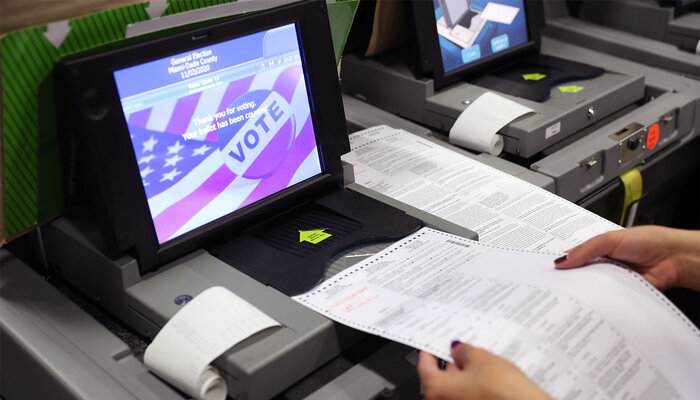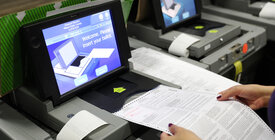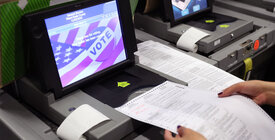Between 2014 and 2022, the Brennan Center and Verified Voting released a series of analyses detailing the problem of aging voting equipment in the United States. These analyses rely on data provided by Verified Voting, which has been tracking voting equipment usage since 2006. This update examines the state of the nation’s voting systems ahead of the November 2024 elections.
When we first reviewed the status of voting equipment nearly a decade ago, we found that almost a quarter of all Election Day voters in 2016 would cast their votes on machines that did not produce a paper backup of their vote. Election experts consider a paper backup to be a critical security measure to ensure that ballots are counted as the voter intended. By 2024, that number has dropped dramatically, with only three states likely to still use paperless voting equipment in 2024. Indeed, we estimate that in the upcoming presidential election, nearly 99 percent of all registered voters will live in jurisdictions where they can cast a ballot with a paper record of the vote, including 100 percent of voters who will cast ballots in battleground states.
Much of the progress that has been made since 2016 is due to an influx of federal funds for election security. In 2017, in the wake of unprecedented cyber threats to elections, the Department of Homeland Security designated election equipment as critical infrastructure. After this designation, Congress provided $380 million in 2018 to help states acquire secure election technology, followed by another $425 million in 2020. Since the 2020 election, Congress has continued to provide election security grants, but in far lower amounts — just $75 million in both 2022 and 2023. This federal funding is the first of its kind since 2010 and helped make it possible for many states to replace outdated equipment.
But upgrading voting technology is a continuous process. Like any type of electronic equipment, voting machines age and need to be upgraded, and continued funding for elections makes this possible.
Small technical failures with voting equipment can lead to viral misinformation about the trustworthiness in elections. While minor errors and disruptions in elections do sometimes occur, election officials have numerous checks and processes in place to help make sure any issues are caught and addressed. And federal and state authorities should do all they can to support election officials in minimizing such errors. Election administration itself has been under a microscope in recent years, with domestic and foreign actors looking to exploit any problem for the purpose of undermining confidence in the entire democratic system. Jurisdictions can reduce the likelihood of disruptions on Election Day by replacing their outdated equipment.
There are other reasons jurisdictions will want to purchase new voting equipment in the next few years. Most importantly, the independent and bipartisan Election Assistance Commission recently approved the most significant update to federal voting technology standards since 2005. These standards, called the Voluntary Voting System Guidelines, set baseline requirements for voting machine cybersecurity, accessibility, and usability that vendors agree to meet, and that most states require for any voting machine in use. Adherence can help election officials assure voters that their technology has been certified by independent and authoritative standards and can reassure a public that is increasingly exposed to false conspiracy theories about the security of our nation’s voting equipment.




